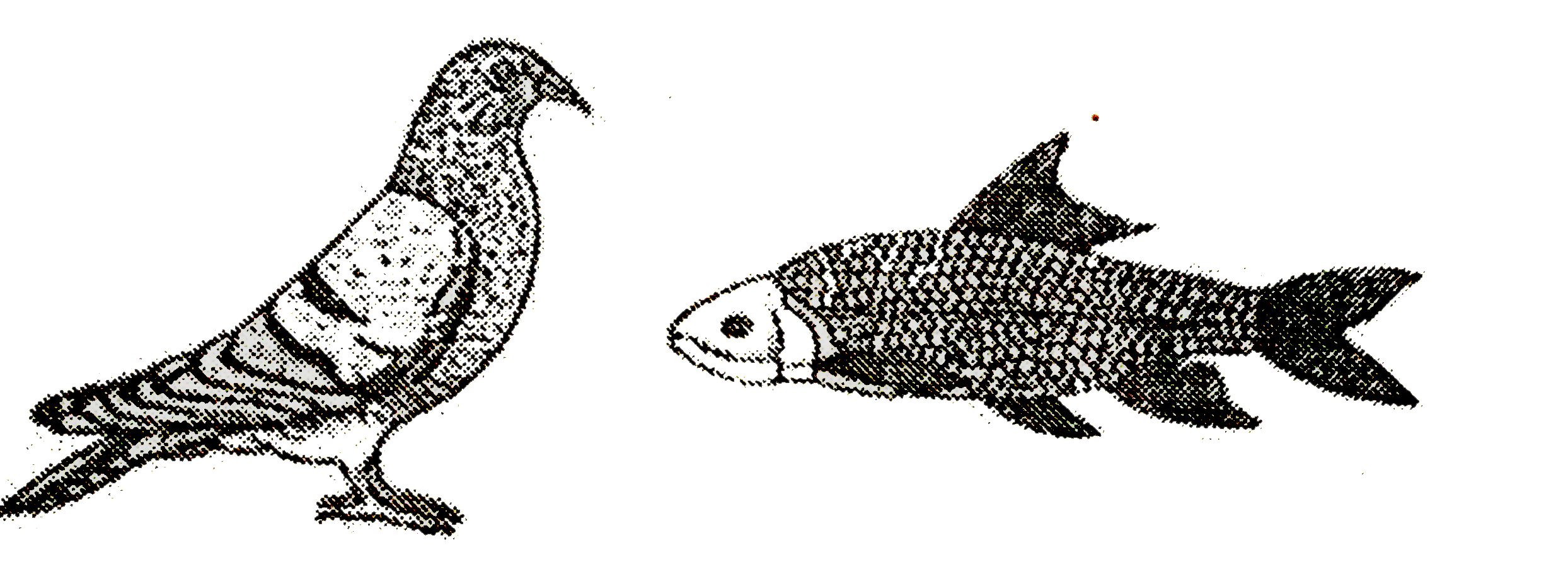Which of the following is a common feature of Ascidia , pristis , Hyla and Calotes ?
Skeleton made up of cartilage and bone
Solid , dorsal and double nerve cord
Three chambered heart with closed circulatory system
Paired pharyngeal gill slits at least in embryonic stage
The correct Answer is:D
To determine the common feature of Ascidia, Pristis, Hyla, and Calotes, we will analyze each option provided in the question step by step.
1. Understanding the Organisms:
- Ascidia: A marine invertebrate belonging to the subphylum Tunicata (or Urochordata).
- Pristis: A genus of rays commonly known as sawfish, which are cartilaginous fish.
- Hyla: A genus of tree frogs, which are amphibians.
- Calotes: A genus of lizards, which are reptiles.
2. Analyzing the Options:
- Option 1: Skeleton made up of cartilage and bone:
- This is incorrect as Ascidia does not have a skeleton made of cartilage or bone; it lacks a hard skeleton. Pristis has a cartilaginous skeleton, while Hyla and Calotes have bony skeletons. Therefore, this option does not apply to all four organisms.
- Option 2: Solid, dorsal, and double nerve cord:
- This option is also incorrect. Ascidia does not have a solid dorsal nerve cord; it has a simple nerve net. The solid dorsal nerve cord is characteristic of vertebrates, but not all the listed organisms possess this feature. Thus, this option is not common to all.
- Option 3: Three-chambered heart with a closed circulatory system:
- This option is incorrect as well. While Hyla and Calotes have three-chambered hearts, Ascidia does not have a closed circulatory system, and Pristis has a different heart structure. Therefore, this option does not apply to all.
- Option 4: Paired pharyngeal gill slits at least in the embryonic stage:
- This is the correct option. All four organisms exhibit paired pharyngeal gill slits during their embryonic development. This feature is a characteristic of the phylum Chordata, which includes all four organisms.
3. Conclusion:
- The common feature among Ascidia, Pristis, Hyla, and Calotes is paired pharyngeal gill slits at least in the embryonic stage.
Final Answer:
The correct answer is Option 4: Paired pharyngeal gill slits at least in the embryonic stage.
- Ascidia: A marine invertebrate belonging to the subphylum Tunicata (or Urochordata).
- Pristis: A genus of rays commonly known as sawfish, which are cartilaginous fish.
- Hyla: A genus of tree frogs, which are amphibians.
- Calotes: A genus of lizards, which are reptiles.
- Option 1: Skeleton made up of cartilage and bone:
- This is incorrect as Ascidia does not have a skeleton made of cartilage or bone; it lacks a hard skeleton. Pristis has a cartilaginous skeleton, while Hyla and Calotes have bony skeletons. Therefore, this option does not apply to all four organisms.
- Option 2: Solid, dorsal, and double nerve cord:
- This option is also incorrect. Ascidia does not have a solid dorsal nerve cord; it has a simple nerve net. The solid dorsal nerve cord is characteristic of vertebrates, but not all the listed organisms possess this feature. Thus, this option is not common to all.
- Option 3: Three-chambered heart with a closed circulatory system:
- This option is incorrect as well. While Hyla and Calotes have three-chambered hearts, Ascidia does not have a closed circulatory system, and Pristis has a different heart structure. Therefore, this option does not apply to all.
- Option 4: Paired pharyngeal gill slits at least in the embryonic stage:
- This is the correct option. All four organisms exhibit paired pharyngeal gill slits during their embryonic development. This feature is a characteristic of the phylum Chordata, which includes all four organisms.
- The common feature among Ascidia, Pristis, Hyla, and Calotes is paired pharyngeal gill slits at least in the embryonic stage.
The correct answer is Option 4: Paired pharyngeal gill slits at least in the embryonic stage.
Topper's Solved these Questions
Similar Questions
Knowledge Check
Which of the following is a common feature of Amphioxus, frog, fish and crocodile?
ASkeleton made up of cartiage and boneBPharyngeal gill slits at least in developmental stagesCDorsal solid nerve cordDThree chambered heartCommon feature of insects is
AJointed appendages and antennalBTwo pairs of wingsCThree pairs of jointed legsDBiting and chewing type of mouth partWhich of the following is a common feature between glycolysis and Krebs cycles :
ARelease of CO2BFormation of FADH2CSite of the processesDDehydrogenation
A common feature of all vertebrated is
View SolutionWhich of the following feature is common to bacteria , mosses and fungus ?
View SolutionWhich of the following is the one common feature found in all types of connective tissue despite their variation in different aspects ?
View SolutionGynaecomastia is a common feature seen in
View SolutionWhich of the following feature is not common between Newt & Hemidactylus
View Solution

